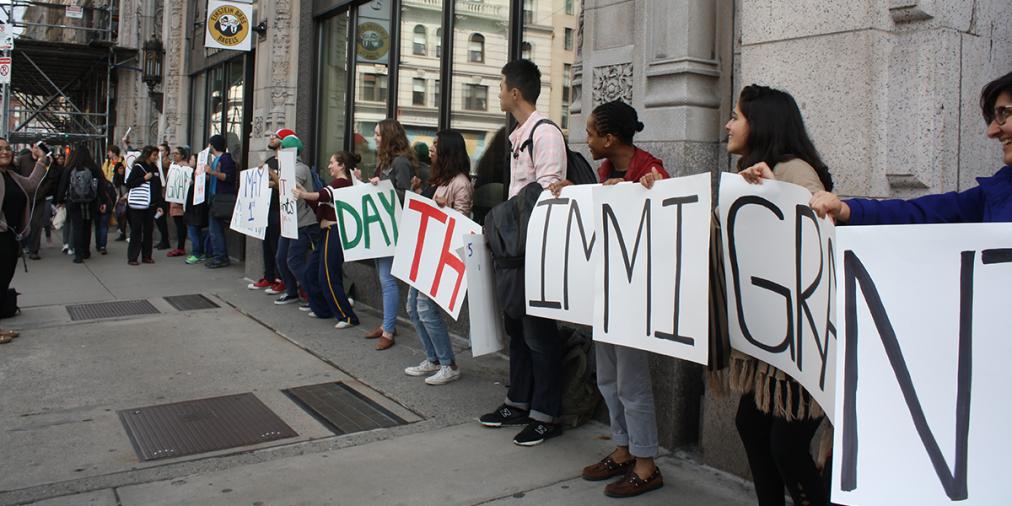Social Justice Center to Dive Deep into Systemic Challenges

The Division of Diversity and Inclusion has a new name and with it, a deeper commitment to centering the voices of those from marginalized groups, and examining and tackling systemic equity issues.
“We know efforts to increase institutional diversity in all forms and to embed inclusive practices into the fabric of the College are critical features of institutional excellence,” Social Justice Center Vice President Sylvia Spears wrote in an email to the community. “We also know that attention to diversity and inclusion alone are not sufficient for transformative personal and systemic change.”
To illustrate the distinctions between diversity, inclusion, equity, and social justice, Spears forwarded an excerpt from an essay written by Dr. Dafina-Lazarus Stewart of Colorado State University. In it, Stewart writes, “Diversity asks, ‘Who’s in the room?’ Equity responds: ‘Who is trying to get in the room but can’t? Whose presence in the room is under constant threat of erasure? Justice responds, ‘Whose ideas won’t be taken seriously because that aren’t in the majority?”
Internally, that means the Social Justice team has developed a set of inquiry questions that will guide their work as they think about creating new programs or changing existing ones, Spears said. For example, the Center will ask themselves who or what is being centered in a discussion, a proposed program, or a process? in what ways are the College’s policies and practices not neutral and how might College policies and practices impact members of our community disproportionately? It means recognizing that actions that may look like the College is trying to treat everyone fairly may be serving the institution or helping one portion of our community at the expense of another.
“This new lens deepens our work and allows us to examine the root causes of challenges,” said Vice President for the Social Justice Center Sylvia Spears, “and then to address those challenges in bold, innovative, creative ways so we’re not replicating what has been done in the past.”
Spears said her division has been having a conversation about how better to serve the community for over a year, including what that would mean for the division’s work.
The Social Justice Center is organized around four practice areas: Advocacy and Support; Community and Movement Building; Knowledge (Re)Creation and Sharing; and Access and Equity.
The Center houses Violence Prevention and Response, the Elma Lewis Center for Civic Engagement, the Office of Title IX Equity & Access,. But Spears said she hopes the offices will operate “seamlessly” across the four practice areas, so that while different team members have different responsibilities and depth of expertise, everyone in the Social Justice Center will be provide advocacy and support for community members, or to engage in community and movement building.
“Internally, it pulls common threads together so people within the Social Justice Center will think more comprehensively about their work and actually grow that work in intentional ways,” Spears said.
While some other colleges and universities, such as The New School in New York, are, like Emerson, moving from diversity and inclusion efforts to social justice work, Spears said it’s not yet a trend.
“That is new work for most colleges,” Spears said. “Most colleges stay in the realm of ‘Who’s here and who’s not included?’ And if efforts are focused on whose not included , they’re working on things on an individual level, and not a systemic level. A key question for us is in what ways might the College be creating conditions of comfort for some but not for others.”
The Social Justice Center hosted a community discussion on “The Civil Rights Machine: Commodification and Contradictions of Progress” on Wednesday, January 31, 12:30-2:00 pm, in the Multipurpose Room at the Max Mutchnick Campus Center.
Categories